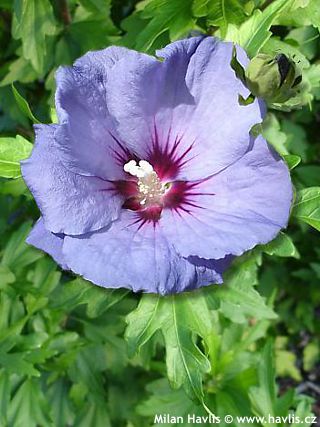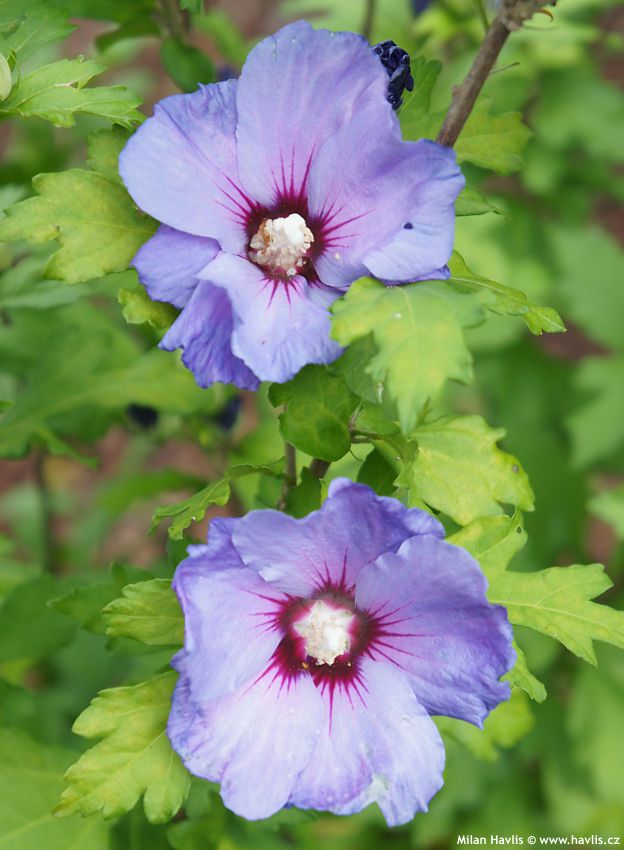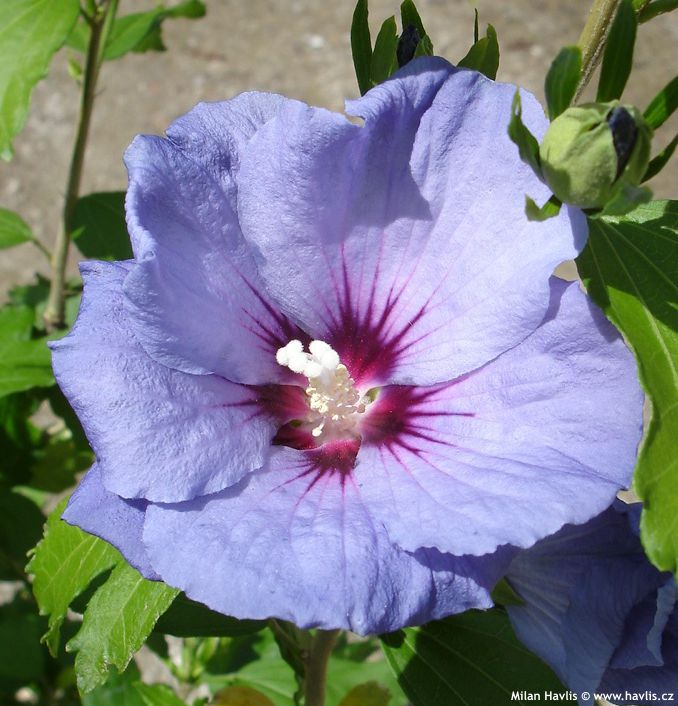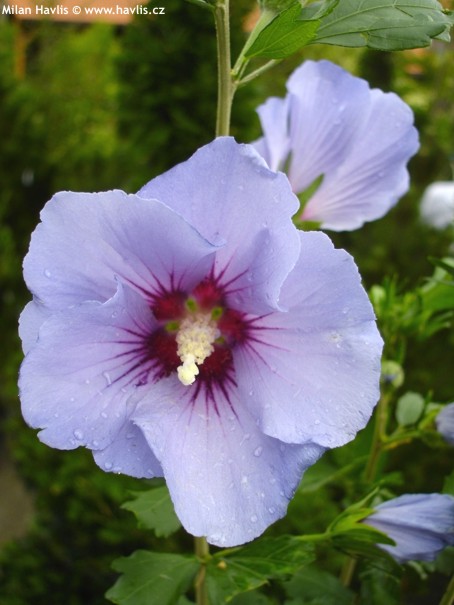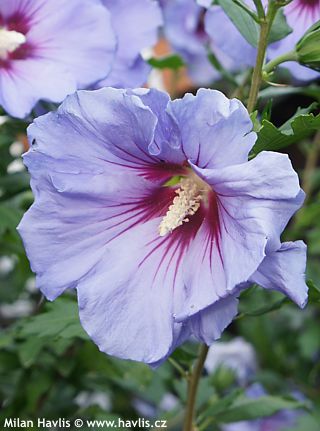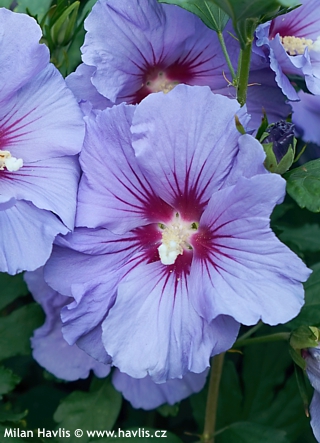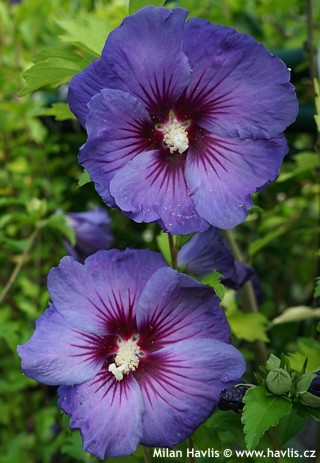Hibiscus syriacus 'Marina' BLUE SATIN™ Rose-of-Sharon
size/type
medium-sized shrub,medium-sized shrub
usual height
1,5-2,5m
usual width
1-2m
leaves
deciduous broadleaf
colour of leaves
flowers
showy
colour of flowers
blooming time
July-September
location
full sun
soil type
neutral
soil moisture requirements
tolerates (but does not demand) wet ground
USDA zone (lowest)
5 (down to -29°C)
winter protection
for zone 5+6

for zone 7

categorized
Hibiscus
Rose-of-Sharon deserves more attention for its abundant flowering in summer. These maintenance-free shrubs come from eastern Asia and are the inevitable ingredient of every summer garden which they highlight with a wide range of coloured flowers. There has been a number of cultivars available since its discovery. They have various bloom colours, shapes and sizes, as well as varigated leaves.Description of the plant:
Blue-flowering hibiscus varieties are very popular in gardens. Marina is one of them. It bears medium-large mauve flowers with deep burgundy red centres that have conspicuous veins along the flower tepals. Stigmas are creamy white which makes an adorable contrast with the flower colour. Marina is ideal for combinations with yellow-flowering lower shrubs.It has very decorative leaves that are unique. They are medium large, 7-8 cm long, narrowly palmate, 3-lobed with one lobe deeply cut, mid to dark green and coarsely toothed. If they turn yellow in summer the plant manifests too much water at the roots. They are either over-watered or planted in too heavy, water-logged soil that might cause serious problems. Hibiscus is a typical example of a plant where the borderline between favourably moist soil (which they need) and wet soil can be tricky. Our advice is: water it well when you plant it, mulch it well and let it be well. Only when you see the leaves are drooping water it again.
Pruning is not needed. The plant forms a nice and dense shrub on its own if grown in good soil. Only if you prefer larger flower size you can prune it hard by one half to two thirds of last year's growths. It will lose its shape but you will gain larger blooms. Older plants should be re-juvenated to keep the long branches from breaking or bending.
Rose-of-Sharon is quite adaptable of soil type. It likes moist but well-drained soil, medium fertile. Older plants dislike peat. Selective fertilizers for better flowering are convenient. Place it in full sun. Fully hardy to min. -27°C (USDA zone 5).
Last update 18-08-2010
QUICK PRICE OVERVIEW
CURRENTLY SOLD OUT
WANT TO TRY A SIMILAR PLANT?












